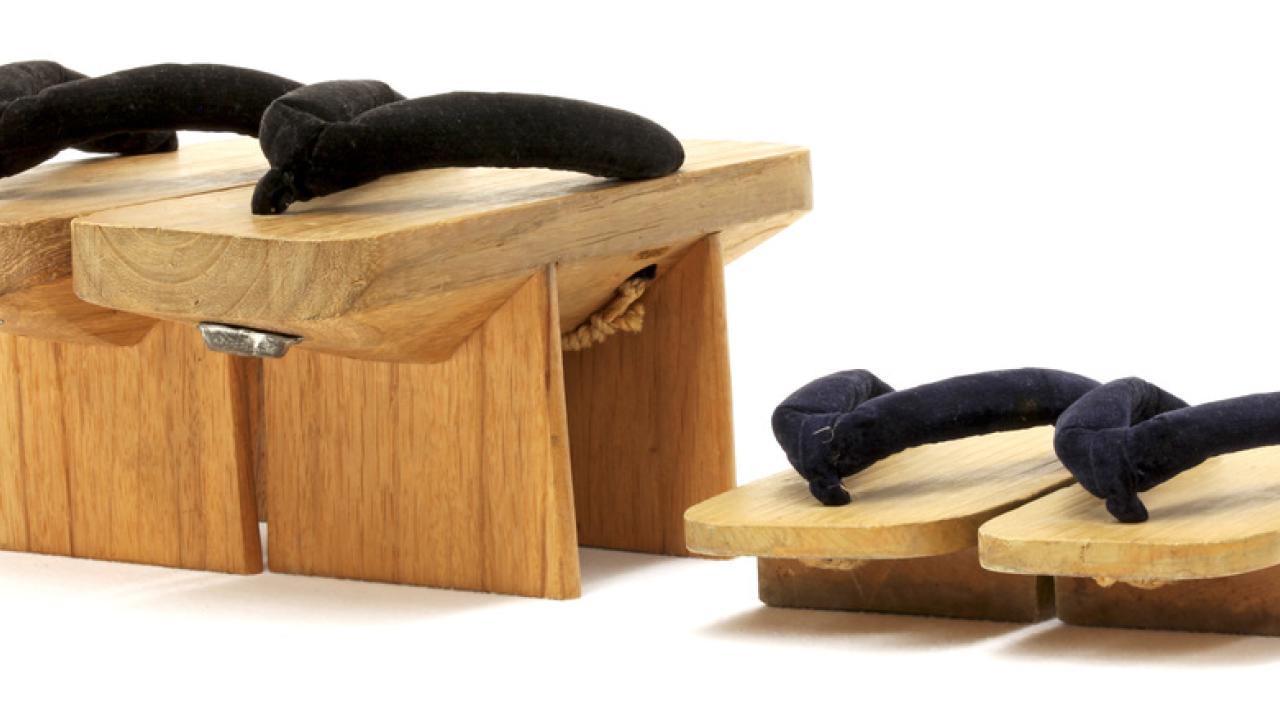
August 14, 2015: Geta
Karankoron karankoron karankoron. The sound of geta in motion. Cicadas call the last days of summer. It is a sound from Old Japan, simple and sweet. Beautiful in the way an every-day sort of sound becomes not-so-everyday.
While geta are still used in Japan, during festivals and for certain occupations, nostalgia for the sound of geta on city streets is not uncommon among the older generation. Long before the late 20th century adoption of platform shoes as a fashion statement, elevated shoes were developed by various cultures around the world in order to keep wearers and their clothes off the dirt from the streets. This was the case in Japan as well, where the style of dress included long yukata or kimono that fell to about foot level. Normally, the wooden slats that elevate the shoe, called ha (teeth), could be 4-5 cm high to keep garments clean, but geta for walking in rain could be around 10 cm high. Various professions that dealt with particularly messy floors, such as a fishmonger in a market, would often have higher geta with higher teeth. Some of these geta reach up to 17 cm high. The geta seen here have teeth heights of about 3 and 9 centimeters, for the child and adult pair respectively.
The thong-type sandal, gripped between the first and second toe, likely entered Japan from southern China and Southeast Asia. The predecessor of the geta, the tageta, goes as far back as the Yayoi period around 2,000 years ago. Tageta were made of boards much larger than the foot, somewhat like snowshoes, and were used by rice farmers to keep their feet from sinking into the mud. During the Heian Period (794 – 1192 C.E.), during the growth of a distinct Japanese culture, geta and zori, (unelevated sandals made from rice straw or lacquered wood) took foot.
To this day, shoe cupboards in a home’s genkan (entrance hallway) are still called getabako (geta box). In Japanese custom, shoes must be removed prior to entering a home, temple, or traditional restaurant. Many restaurants and homeowners have slippers for their guests to use, including separate slippers for the bathroom. The division between the dirty reality of the outside world and the inner sanctity of the home is apparent in both Japanese custom and material culture.
The next time you hear the sound of flip-flops smacking into the back of heels or lazily dragging across the ground during a California summer, don’t be annoyed. Enjoy the simple beauty of it. Perhaps there will be a day when you are older where flip-flops are a thing of the past, and you may look back with fond nostalgia. Just don’t wear those flip-flops in the house.